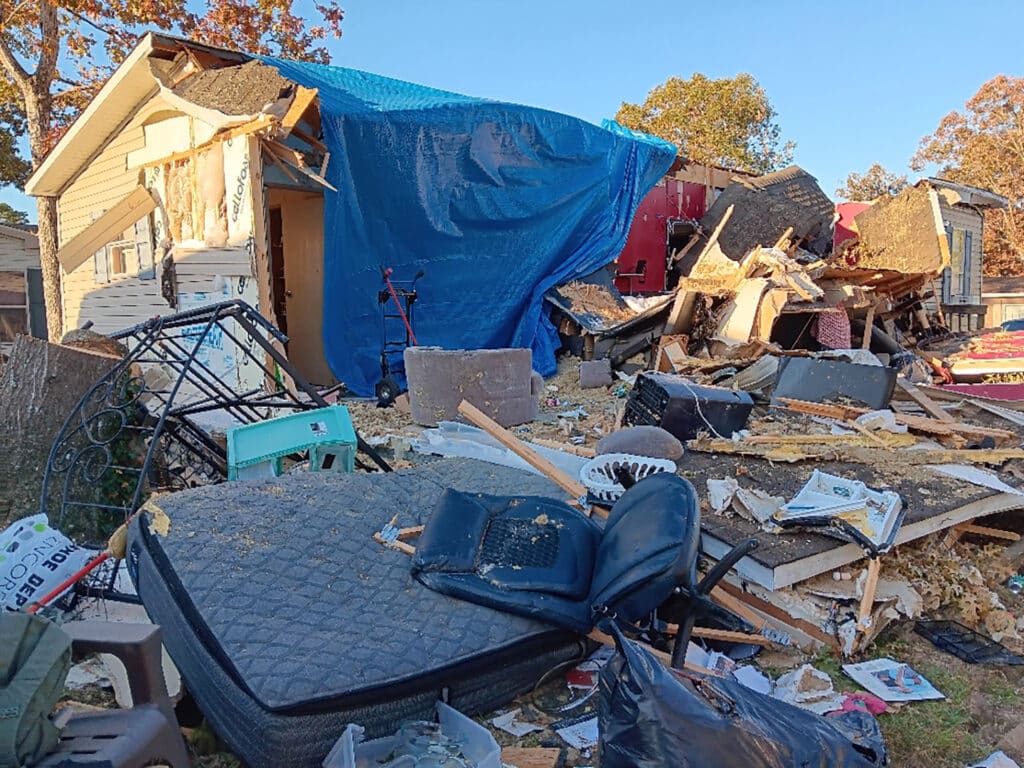Sagamore marks
100 storied years
FORT WORTH In the grand scheme of Christian history, 100 years is but a dog-eared page in the annals of the life of the church. But for a congregation that grew up on the east side of Fort Worth in the midst of the booms of the stockyard and oil industries, a century of ministry is a historic landmark to be celebrated.
As Fort Worth was burgeoning from the success of the newly established meat packing industry?the population tripled from 26,668 to 76,312 from 1900 to 1910?an electric interurban rail line connected Fort Worth with Dallas, easing the commute between the two cities. A church was planted at a stop on that line, bringing together Southern Baptists in Dallas and Fort Worth.
It’s gone by many names but the mission of Sagamore Baptist Church has never changed. Established Oct. 10, 1910 by 13 charter members, the congregation shared the Sagamore Hill School House with the local Presbyterian and Methodist churches. The church first took the name Edgewood Baptist Church and called T.H. Sturgis out of retirement to pastor their fledgling congregation.
With $500 borrowed from the Home Mission Board, the church constructed their first building in 1913 on Virginian Avenue. It was the existence of the newly completed interurban electric railroad line that brought commuters and a growing number of residents to the rural part of what would become east Fort Worth. The sixth stop on the line was at Rand Street near the church and the congregation changed the name of their fellowship to Stop Six Baptist Church.
Ten years after its birth, the growing congregation bought land on Panola Street and built the first of four buildings on that site. In 1925 the congregation changed its name to Sagamore Hill Baptist Church. Following the death of their first pastor in 1914 the church called 20 other men to the pulpit, most of them seminary students who served an average of two years each, before calling their longest-tenured pastor, W. Fred Swank, in 1933. A year later a new and expanded auditorium was dedicated.
During the service of Swank, Sagamore Hill saw its peak growth. The original 1914 structures were demolished and a new traditional-styled church was built fronting Panola Street. Following World War II an even larger auditorium was built and the existing facility was turned into Sunday School classrooms. By 1971 that space was filled with a high attendance of 1,552 each Sunday.
From those church meetings and Sunday School classes came the likes of former IMB President Jerry Rankin, GuideStone President O.S. Hawkins, Prestonwood Baptist Church Pastor Jack Graham, and James Bryant, now senior professor of pastoral ministry at Criswell College. Bryant pastored Sagamore from 1977-1983 following Swank’s retirement in 1975. Hawkins noted the contribution of former music minister Gerald Ray for introducing Christmas pageants that attracted the community to Sagamore.
During the centennial celebration services held Oct. 9-10, Bryant addressed his old congregation. He said he knew only half of those gathered in the church’s newest sanctuary from his days as pastor.
“This is a new day for Sagamore Baptist Church,” Bryant said. “You may have left the hill behind but you brought Sagamore with you.”
Bryant was referring to the church’s latest expansion?a move from their long-time home on Panola Street’s Sagamore Hill to a new facility on Dottie Lynn Parkway in June 2008. Drawing from that and looking to the future, Bryant read from Isaiah 54:2-3 and 55:5-13.
Hawkins was the keynote speaker for the Saturday evening celebration, turning to Acts 13:36 for his text to remind those gathered of what they were taught by the church. Just as David served God’s purpose in his own generation, Hawkins said Swank taught “that we were never more like Jesus than when we were washing others’ feet” in service to Christ.
He spoke of the constant reminder to be submissive servants and encouraged them to seek the Lord’s will and purpose in their lives. “Many public invitations included a call to what we used to call special service,” Hawkins told the TEXAN. “It is no wonder that over 100 of us went out from that church” to serve in vocational ministry. “Fred Swank called out the called consistently and kept it before us.”
As a cutting-edge church in those days, Hawkins noted that the message never changes, but the methods should change to reach each generation. Furthermore, that ministry was conducted with an eternal purpose, knowing “it is appointed to man once to die and then the judgment.”
“We were a hot-hearted, evangelistic, soul-winning church with an eternal purpose, realizing that men and women without Christ were headed toward a godless eternity,” Hawkins said.
With that evangelistic fervor still present, Pastor Billy Taylor shared during the Oct. 10 service that he and the congregation knew when he began serving in 2005 that “God was not finished with their church.”
“Although the church was mostly senior adults, there was still a desire to be used of God.”
Past relocation efforts had been thwarted but in 2005 a confluence of events brought about the purchase of new land and the construction of a $6.5 million facility.
Taylor challenged Sagamore Baptist Church to be a church that “equips believers to change their world.” He wanted the old church in the new building to be about the age-old mandate of making and equipping disciples.
“My passion is to see people become fully committed followers of Christ, and then to take that relationship with Christ into every area of their life. I may not be able to change the world, but I can change my world?my family, my neighborhood, and my friends.”














